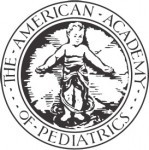
The highest-rated show in prime time for the 1970-1971 television season was “Marcus Welby, MD,” a program about 2 physicians trying to treat people as individuals in an age of increasingly specialized medicine and impersonal providers. At a time when doctors still made house calls, “Marcus Welby, MD” was entertaining and informative— addressing the health issues of the era while also helping to educate the viewing public about compassionate, patient- and family-centered care. Many of us have fond memories of that era and of pediatricians who, like the fictitious Dr Welby, gave generously of their time and skills to help us and our families.
In 2012, medical treatment and technology is vastly more complex than it was in 1970, and more than a few people speak disdainfully about how “the days of Marcus Welby are long gone” (Google has 17,600 search results for that exact phrase). However, today throughout the country, families and health professionals are working together in ways evocative of the Welby style by adopting the principles of the patient- and family-centered medical home. The concepts of a medical home, first articulated by pediatric health care providers as they worked with families to create more effective partnerships to improve care for children with special health care needs, have greatly evolved and expanded. Fueled by the support of their own professional societies as well as other private and public resources and the health research community, both adult and child pri- mary care physicians have opened up unprecedented areas of collaboration among families, physicians, and their staff. Overwhelmingly, families and health professionals express excitement about these new collegial relationships and describe the positive changes that can—and have— occurred when parents and professionals work together.

